Healthcare IT solutions will be a greater priority among IoT service providers once the disruptions caused by the COVID-19 slow down. Although remote sensing medical devices have existed for over more than two decades, and telemedicine has already been around for a while, the underlying technology has evolved 100x through the years. No more doctor visits. Today we have an interconnected network of intelligent devices capable of making decisions, work as groups, and send information to the cloud — Internet of Things.
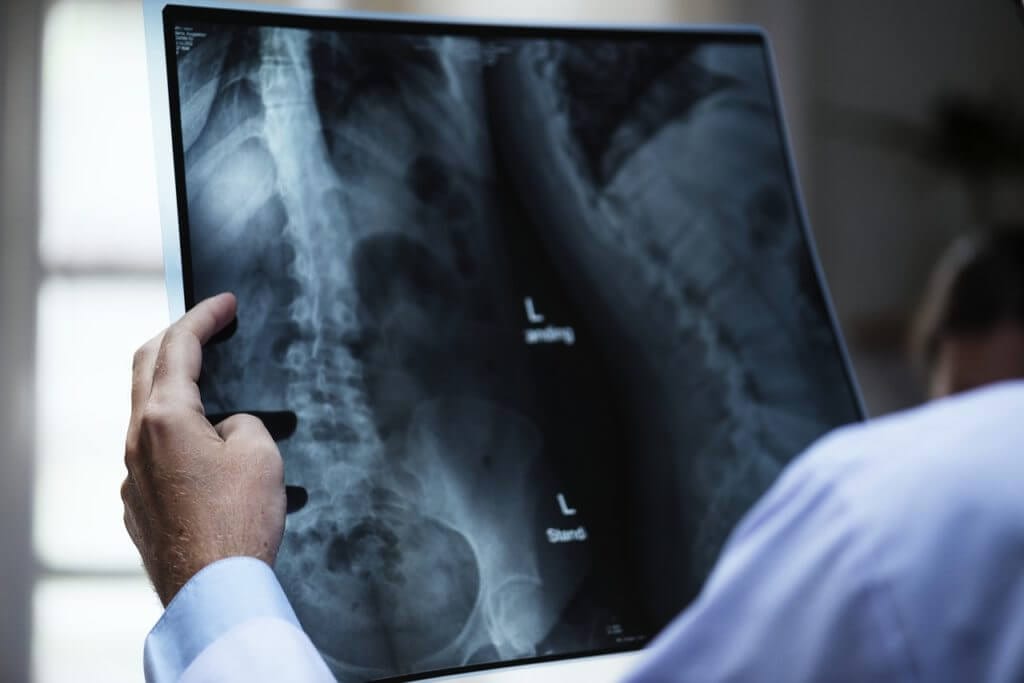
In this article, we will take a closer look at Internet of Things (IoT) for Healthcare.
- Internet of Things for Healthcare.
- What exactly is IoT and why it is important in healthcare?
- IoT in healthcare examples.
- How IoT Works in Healthcare?
- IoT Devices in Healthcare.
- Benefits of IoT in Healthcare.
- Challenges of IoT in Healthcare.
- Future of IoT in Healthcare.
Let’s get to business.
Internet of Things for Healthcare
The market of IoT in healthcare is predicted to exceed $10 billion by 2024, according to a Brandessence market research. This growth forecast is also impacted by other important technologies. IoT is slowly getting traction and evolving alongside the new ultra-fast 5G mobile wireless, Artificial Intelligence (AI), and Big Data. Combing this powerful technologies with the Internet of Things will likely revolutionize the healthcare industry. IoT in healthcare using 5G wireless and AI could, for example, completely transform the way patients are monitored and treated remotely.
Still, IoT will not only help with the patient’s health, but also improve the productivity of the healthcare industry workers.

What exactly is IoT and why it is important in healthcare?
In a nutshell, IoT is the concept created around the idea of full ubiquitous computing, which is the processing of information linked with external activity or objects. Ubiquitous computing involves connecting electronic devices with microprocessors and sensors to talk to each other. IoT is a ubiquitous network except that all of those electronic devices have access to the Internet.
IoT in the healthcare industry is a great example of this omnipresent computing. For example, hundreds of intelligent electronic devices can be set up in a hospital to monitor patients’ health status 24/7, talk to each other, make decisions, and upload information to a healthcare cloud platform.
IoT in Healthcare Examples
How IoT can be used in healthcare effectively? Let’s explore three workable Internet of Things healthcare examples below.
- Sensing and uploading up-to-date patient information to the cloud in emergency situations, from the ambulance or even from home.
- Medical devices capable of performing self-maintenance. IoT healthcare devices will sense their own components, detect low thresholds, and communicate with medical personnel and manufacturers.
- IoT and wearables can help home patients and elderly communicate directly with a healthcare facility.
- Telemedicine can be considered a “primitive” form of an Internet of Things in healthcare example. With IoT, a patient can be observed and in some cases treated remotely through video cameras and other electronic actuators.
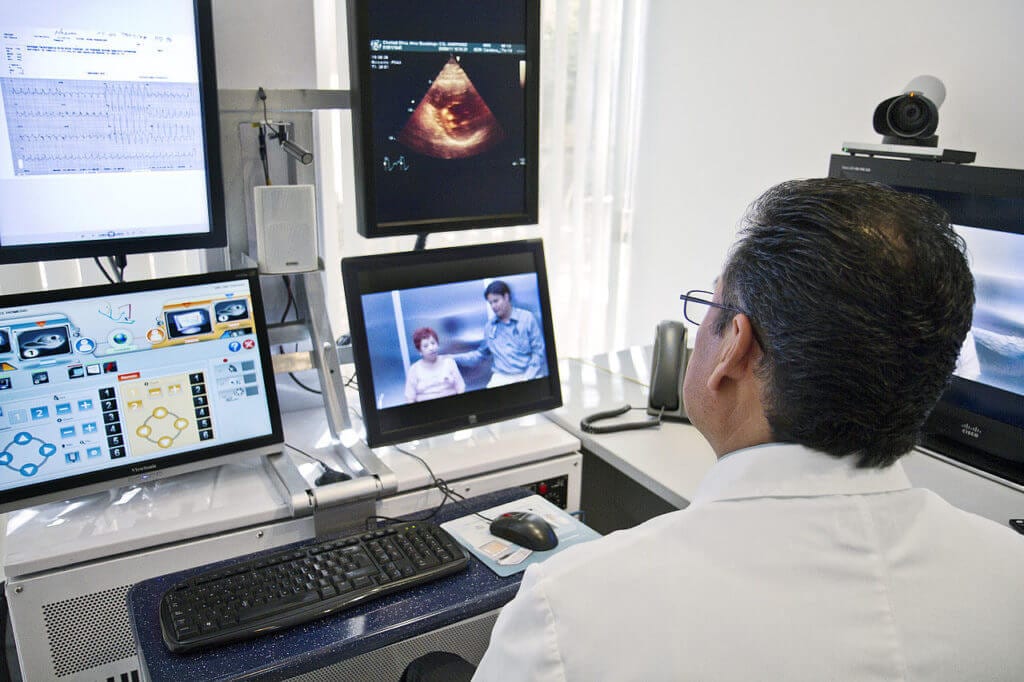
How IoT Works in Healthcare?
To understand how the Internet of Things in Healthcare works, let’s see how IoT works in general. As discussed above, an IoT unit can be considered as a device with a sensor that can interact with the physical world and send information to the Internet.
In healthcare, these devices can gather different patient data and receive inputs from health practitioners. An Internet of Things Healthcare example is continuous glucose monitoring for insulin pens that works effectively for patients with diabetes.
All these devices are able to communicate with each other and in some cases take important actions that would provide timely help or even save a life. For example, an IoT healthcare device can make intelligent decisions like calling the healthcare facility if an elderly person has fallen down. After collecting passive data, an IoT healthcare device would send this critical information to the cloud so that doctors can act upon it — view the general patient status, see if calling an ambulance is necessary, what type of help is required, and so on.
Thus, Internet of Things Healthcare can greatly improve not only a patient’s health and help in critical situations, but also the productivity of health employees and hospital workflows.
How IoT helps in healthcare — Process
Let’s explore an IoT healthcare workflow example:
- A sensor collects data from a patient or a doctor/nurse inputs data.
- An IoT device analyzes the collected data with the help of AI-driven algorithms like machine learning (ML).
- The device makes a decision whether to act or send the information to the cloud.
- Doctors, health practitioners, or even robots are enabled to make actionable and informed decisions based on the data provided by the IoT device.
IoT Devices in Healthcare
Although not all IoT devices should have a sensor, they at least need to have a radio and a given TCP/IP address to enable communication with the Internet. As long as a device has access to the Internet, it can be considered an IoT device.
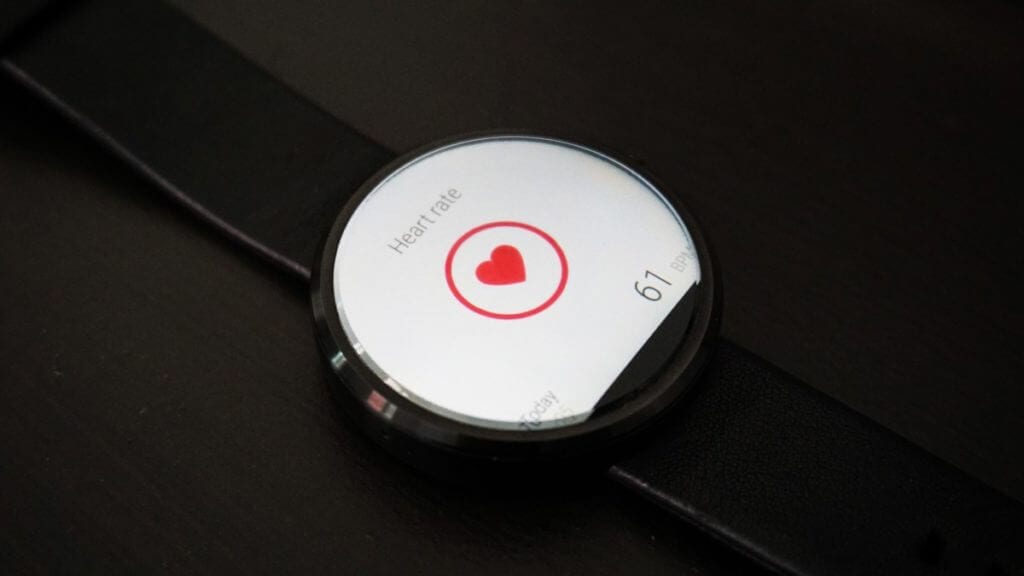
So, every smartphone is an IoT device. A smartphone with the right set of healthcare apps can help you detect diseases and improve your health. Some examples of these are skin cancer detection apps that use your camera and AI-driven algorithms to map moles on your skin. Other examples would be sleep, yoga, fitness, and pill management apps.
Still, smartphone is a smartphone. Monitoring healthcare is not its primary application. A dedicated healthcare IoT device can do significantly more.
- Smartwatch. Wearables sold at consumer electronics stores come with a sensor and Internet connection. Some of them (like iWatch Series 4) can even monitor your heart rate, control diabetes, help in speech treatment, aid in improving posture, and detect seizures.
- Insulin Pens and Smart CGM (Continuous Glucose Monitoring). These devices can monitor blood glucose levels and send the data to a dedicated smartphone app. Patients with diabetes can use these devices to track their glucose levels and even send this data to a healthcare facility.
- Brain Swelling Sensors. These tiny sensors are implanted within the cranium to help brain surgeons keep track of severe brain injuries and avoid further deathly swelling. They measure pressure on the brain and are able to dissolve by itself in the body without further medical interference.
- Ingestible Sensors. Prescribed medication is swallowed with a tiny digestible medical sensor that sends a small signal to a wearable receiver on the patient, which, in turn, sends data to a dedicated smartphone app. This sensor can help doctors ensure patients take their medication at all times.
- Smart video pills. A smart pill can travel through a patient’s intestinal tract and take pictures as it travels. It can then send the collected information to a wearable device, which in turn would send it to a dedicated smartphone app (or straight to the app). Smart pills can also help visualize the gastrointestinal tract and colon remotely.
Benefits of IoT in Healthcare.
IoT in the healthcare industry has countless benefits. However, the most important is that treatment outcomes can be significantly improved or maximized, as the data gathered by IoT healthcare devices is highly accurate, enabling informed decisions.
Health facilities and practitioners will be capable of minimizing errors because all patient information can be measured quickly and sent to a board of doctors or a healthcare cloud platform. AI-driven algorithms running on these IoT devices could also help make intelligible decisions or suggestions based on existing data.
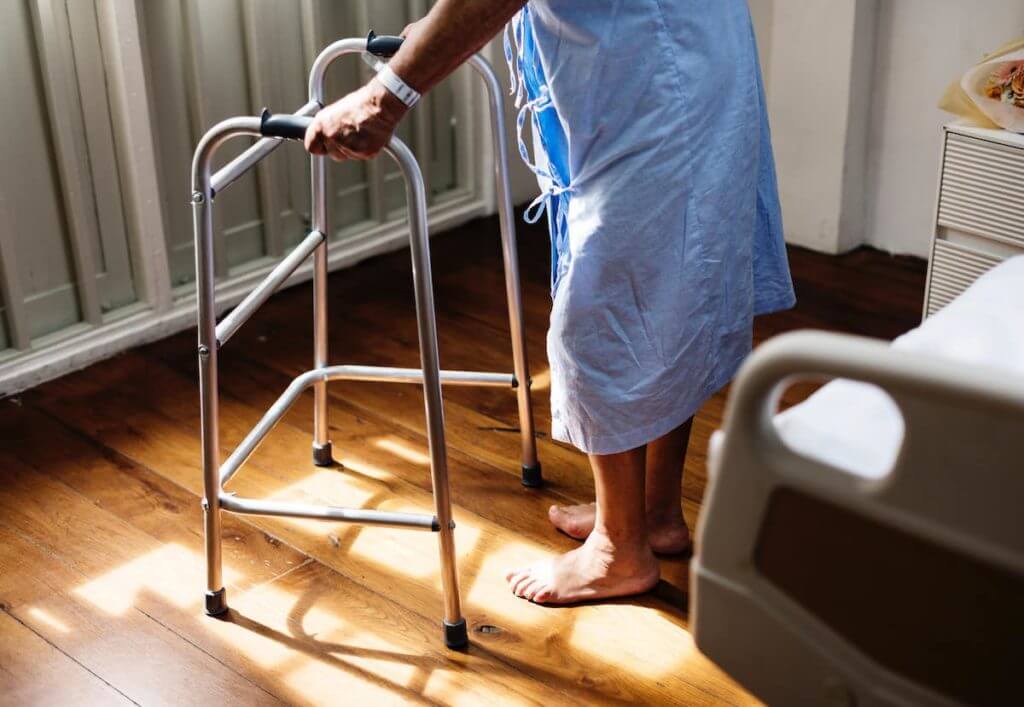
Another great benefit of IoT in healthcare is reduced costs. With IoT in healthcare, non-critical patients will be able to stay at home while various IoT devices monitor and send all important information to the health facility — meaning less hospital stays and doctor visits.
With detailed information received from lots of IoT devices, health facilities will also be able to improve their disease management. They’ll have more data in real-time coming in than ever before. Still, this entails a number of challenges.
Challenges of IoT in Healthcare.
Although IoT in healthcare provides many great benefits, there are also some challenges that need to be solved. The Internet of Things Healthcare solutions cannot be considered for implementation without acknowledging these challenges.
- Massive inputs of generated data. Having thousands of devices in a single healthcare facility and a thousand more sending information from remote locations — all in real-time — will generate huge amounts of data. The data generated from IoT in healthcare will likely make storage requirements grow much higher, from Terabytes to Petabytes. If used properly, AI-driven algorithms and cloud can help make sense of and organize this data, but this approach needs time to mature. So, creating a large-scale IoT healthcare solution will take a lot of time and effort.
- IoT devices will increase the attack surface. IoT healthcare bring numerous benefits to the industry, but they also create numerous vulnerable security spots. Hackers could log into medical devices connected to the Internet and steal the information — or even modify it. They can also take a step further and hack an entire hospital network, infecting the IoT devices with the infamous Ransomware virus. That means the hackers will hold patients and their heart-rate monitors, blood pressure readers, and brain scanners as hostages.
- Existing software infrastructure is obsolete. IT infrastructures in many hospitals are obsolete. They will not allow for proper integration of IoT devices. Therefore, healthcare facilities will need to revamp their IT processes and use new, more modern software. They will also need to take advantage of virtualization (technologies like SDN and NFV), and ultra-fast wireless and mobile networks like Advanced LTE or 5G.
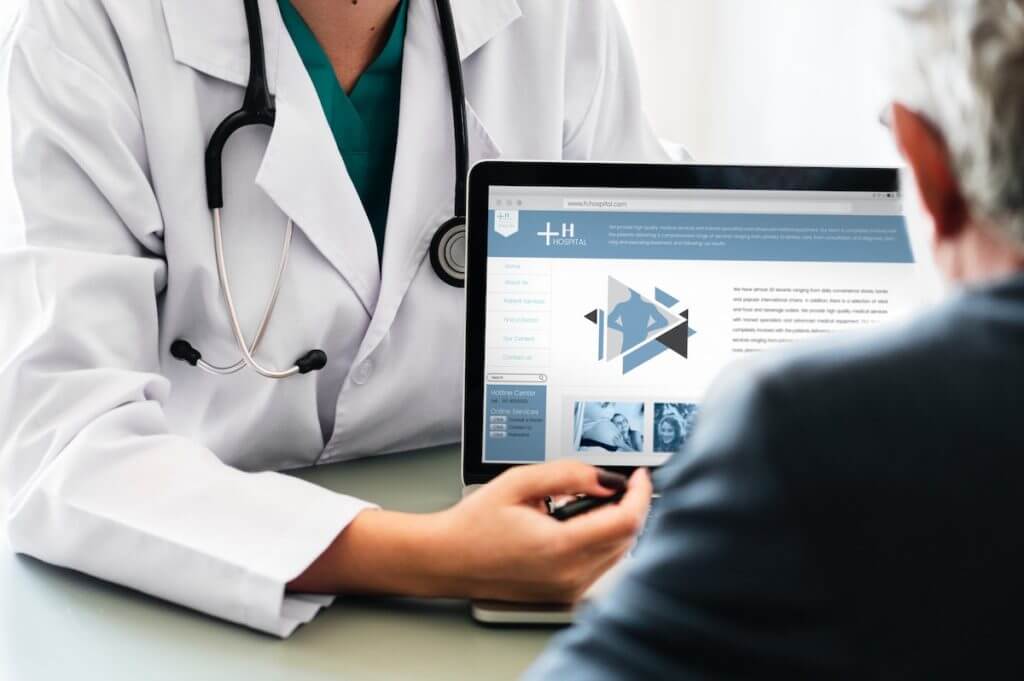
Why The Internet Of Medical Things Is The Future Of Healthcare?
IoT in healthcare industry can improve components, such as medical gadgets or services. It can also enhance healthcare applications, such as telemedicine, patient monitoring, medication management, imaging, and overall workflows in hospitals.It can also create new ways of treating different diseases.
The Internet of Things for healthcare will not only be used by hospitals or facilities, but also by surgical centers, research organizations, and even governmental institutions.
Future of IoT in Healthcare
IoT in healthcare industry does not stand alone. All IoT devices and their networks need to be combined with other technologies to help healthcare facilities transform in a meaningful way. As mentioned before, IoT will revolutionize the healthcare industry but it also needs data, high-speed communication, and proper security and compliance.
5G will provide the ultra-low latency speeds and mobility that the IoT in the healthcare industry needs. In turn, AI-driven solutions will make sense of the data lakes gathered from a collection of devices. Big Data strategies will use such AI algorithms to analyze data in real-time and make critical health decisions. Virtualization will help to reduce or get rid of old infrastructure in hospitals.
IoT is already using most of these technologies to help healthcare evolve, and this evolution will only continue. Sooner than later, healthcare and Internet of Things will become inseparable, completely transforming how we approach our healthcare.
We, at Intellectsoft, empower companies and their healthcare workforce with cutting-edge transformative solutions and data-driven insights. Are you and your organization ready to shift the mindsets and get the most out of innovations? Talk to our experts and find out more about the topic and how your business or project can start benefiting from it today!